Aggelos K Katsaggelos
Improving Acquisition Speed of X-Ray Ptychography through Spatial Undersampling and Regularization
May 20, 2021
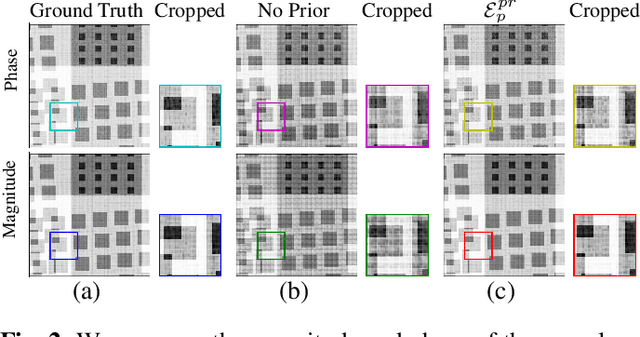
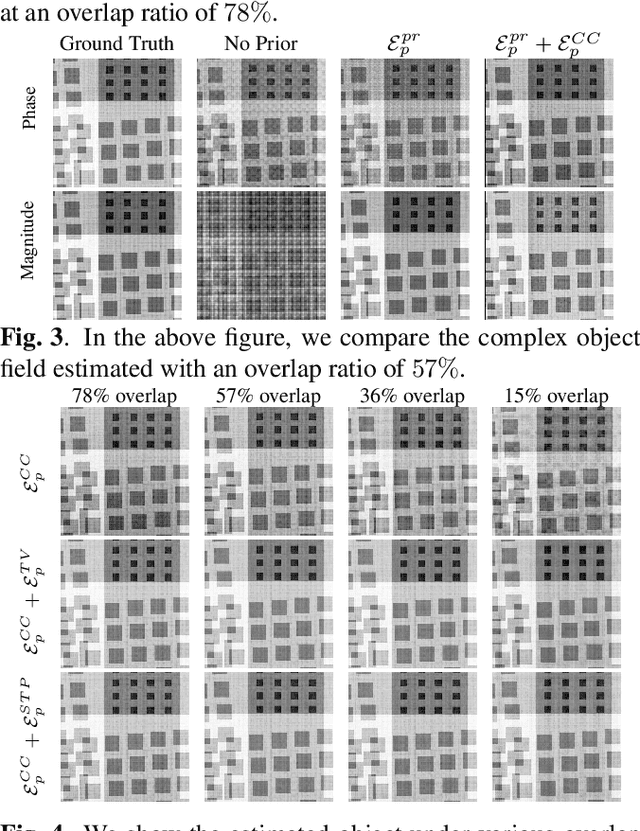
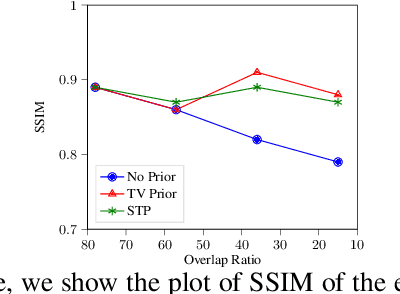
Abstract:X-ray ptychography is one of the versatile techniques for nanometer resolution imaging. The magnitude of the diffraction patterns is recorded on a detector and the phase of the diffraction patterns is estimated using phase retrieval techniques. Most phase retrieval algorithms make the solution well-posed by relying on the constraints imposed by the overlapping region between neighboring diffraction pattern samples. As the overlap between neighboring diffraction patterns reduces, the problem becomes ill-posed and the object cannot be recovered. To avoid the ill-posedness, we investigate the effect of regularizing the phase retrieval algorithm with image priors for various overlap ratios between the neighboring diffraction patterns. We show that the object can be faithfully reconstructed at low overlap ratios by regularizing the phase retrieval algorithm with image priors such as Total-Variation and Structure Tensor Prior. We also show the effectiveness of our proposed algorithm on real data acquired from an IC chip with a coherent X-ray beam.
Reinforcement Learning for Adaptive Video Compressive Sensing
May 18, 2021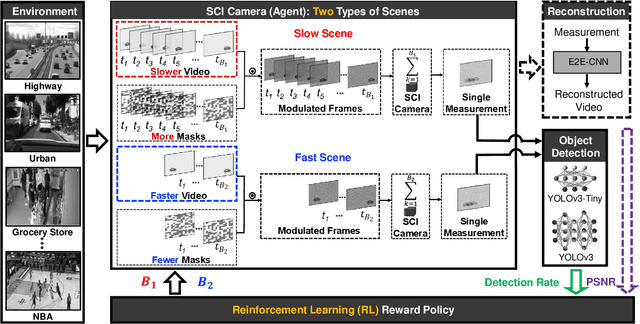
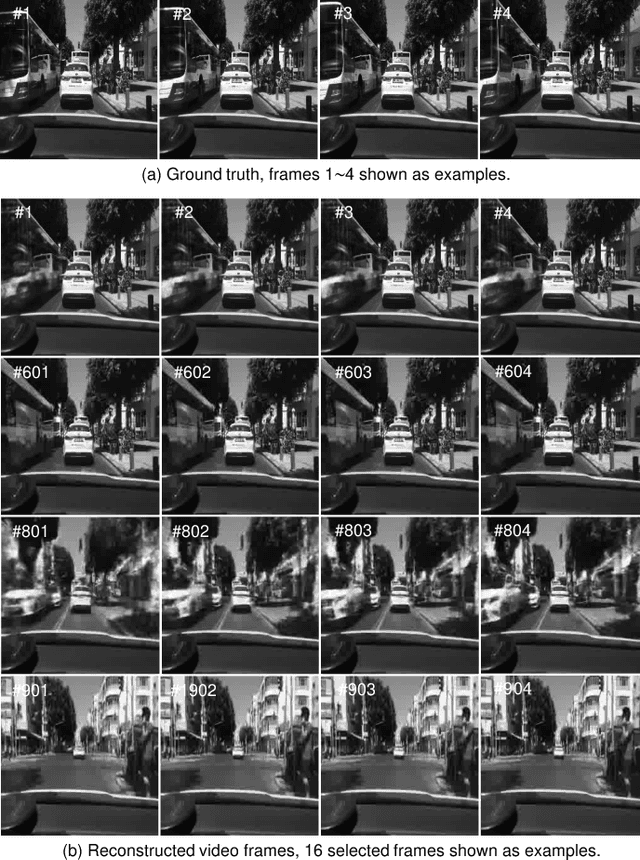
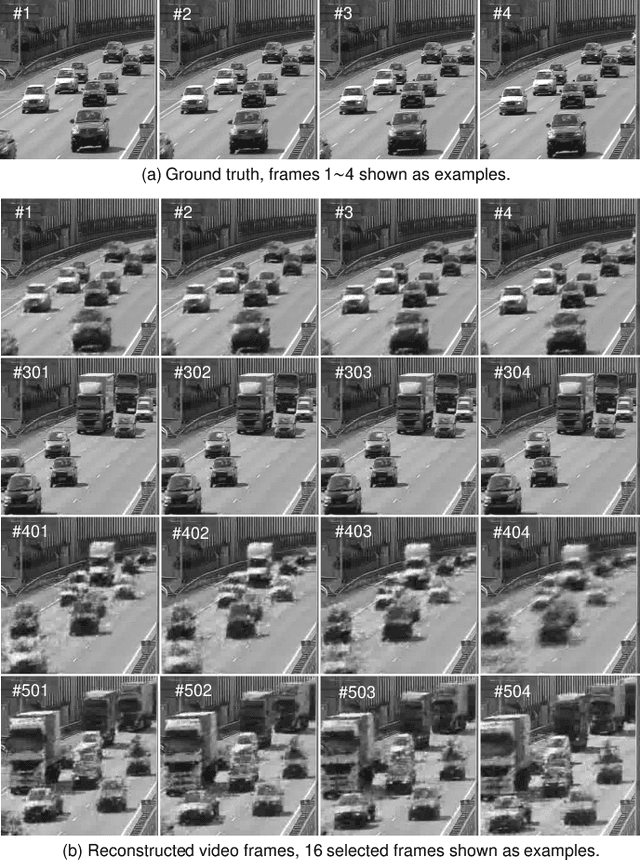
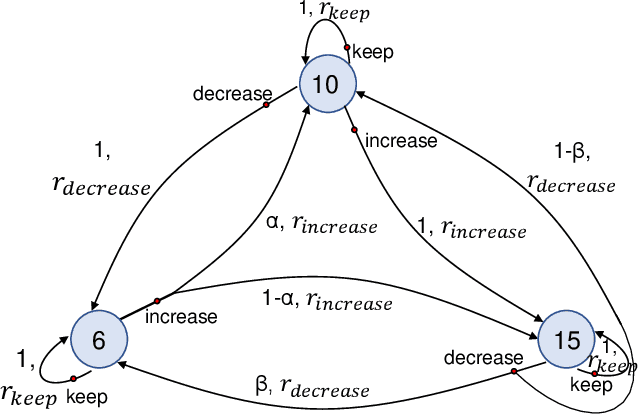
Abstract:We apply reinforcement learning to video compressive sensing to adapt the compression ratio. Specifically, video snapshot compressive imaging (SCI), which captures high-speed video using a low-speed camera is considered in this work, in which multiple (B) video frames can be reconstructed from a snapshot measurement. One research gap in previous studies is how to adapt B in the video SCI system for different scenes. In this paper, we fill this gap utilizing reinforcement learning (RL). An RL model, as well as various convolutional neural networks for reconstruction, are learned to achieve adaptive sensing of video SCI systems. Furthermore, the performance of an object detection network using directly the video SCI measurements without reconstruction is also used to perform RL-based adaptive video compressive sensing. Our proposed adaptive SCI method can thus be implemented in low cost and real time. Our work takes the technology one step further towards real applications of video SCI.
Adaptive Illumination based Depth Sensing using Deep Learning
Mar 23, 2021



Abstract:Dense depth map capture is challenging in existing active sparse illumination based depth acquisition techniques, such as LiDAR. Various techniques have been proposed to estimate a dense depth map based on fusion of the sparse depth map measurement with the RGB image. Recent advances in hardware enable adaptive depth measurements resulting in further improvement of the dense depth map estimation. In this paper, we study the topic of estimating dense depth from depth sampling. The adaptive sparse depth sampling network is jointly trained with a fusion network of an RGB image and sparse depth, to generate optimal adaptive sampling masks. We show that such adaptive sampling masks can generalize well to many RGB and sparse depth fusion algorithms under a variety of sampling rates (as low as $0.0625\%$). The proposed adaptive sampling method is fully differentiable and flexible to be trained end-to-end with upstream perception algorithms.
Deep Multi-view Models for Glitch Classification
Apr 28, 2017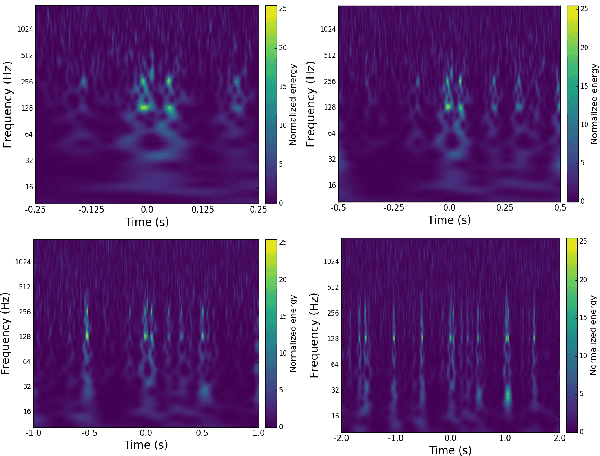
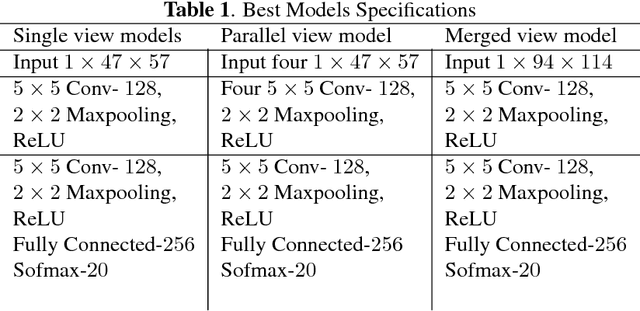
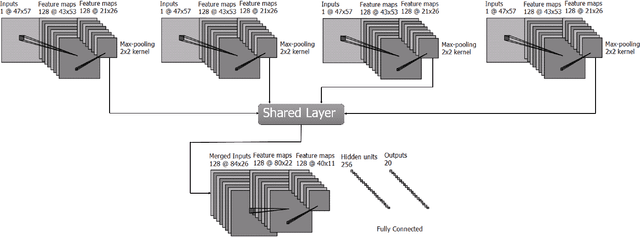

Abstract:Non-cosmic, non-Gaussian disturbances known as "glitches", show up in gravitational-wave data of the Advanced Laser Interferometer Gravitational-wave Observatory, or aLIGO. In this paper, we propose a deep multi-view convolutional neural network to classify glitches automatically. The primary purpose of classifying glitches is to understand their characteristics and origin, which facilitates their removal from the data or from the detector entirely. We visualize glitches as spectrograms and leverage the state-of-the-art image classification techniques in our model. The suggested classifier is a multi-view deep neural network that exploits four different views for classification. The experimental results demonstrate that the proposed model improves the overall accuracy of the classification compared to traditional single view algorithms.
 Add to Chrome
Add to Chrome Add to Firefox
Add to Firefox Add to Edge
Add to Edge